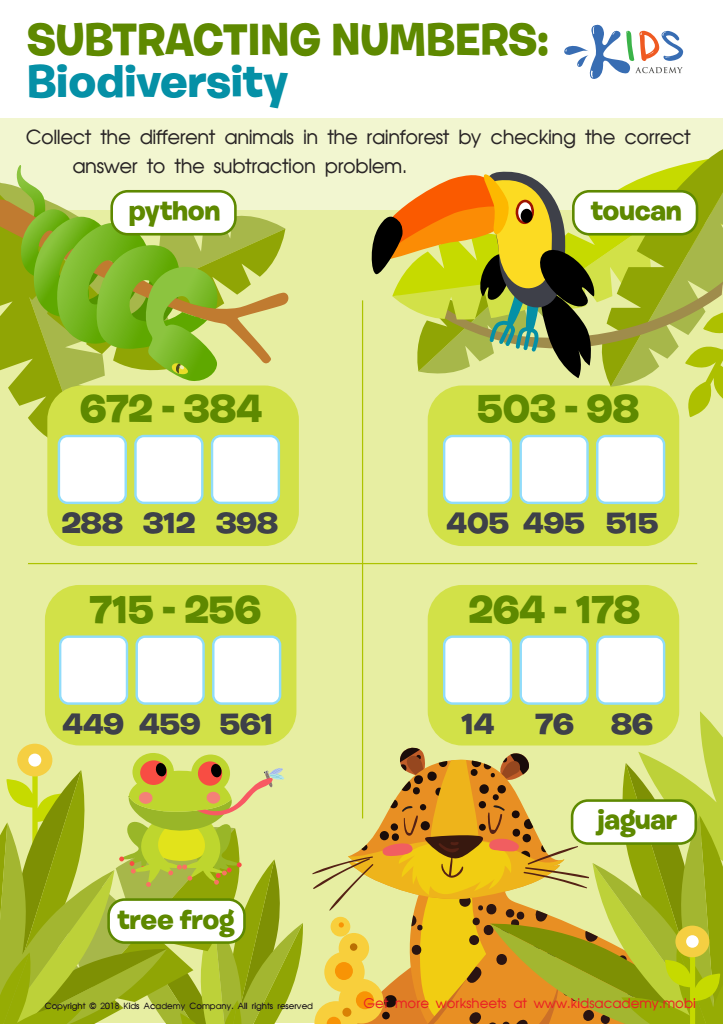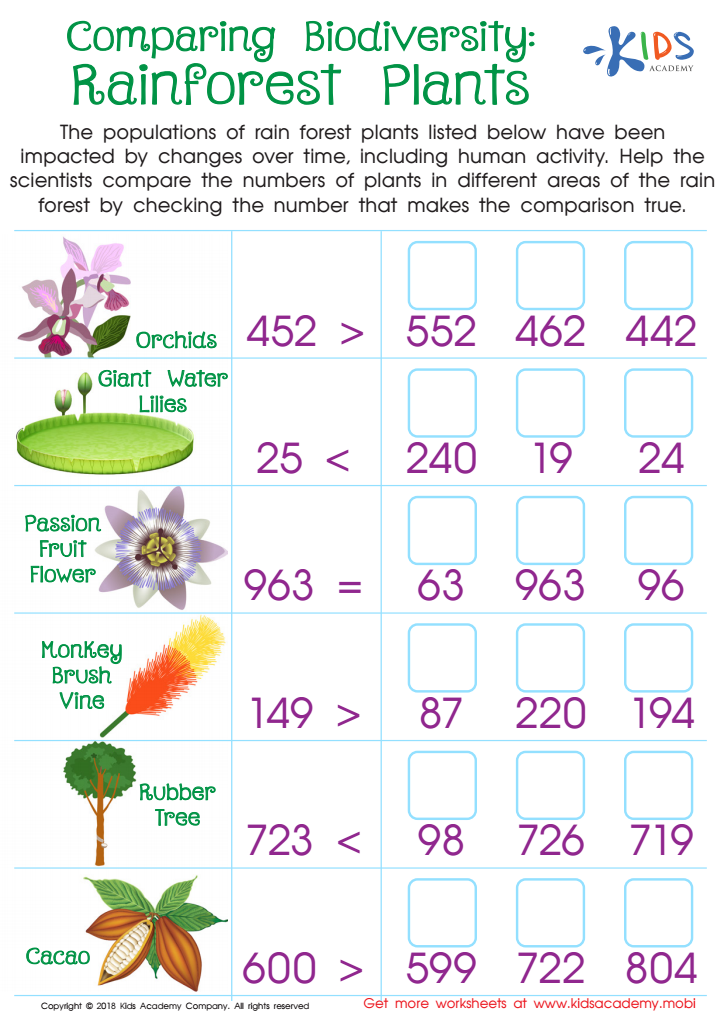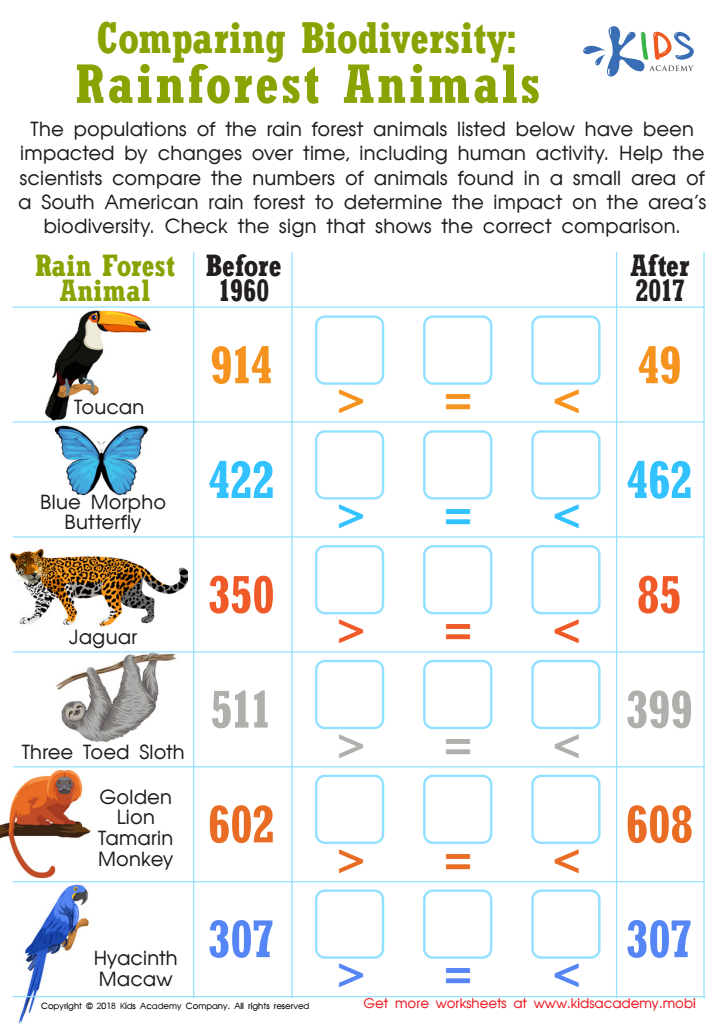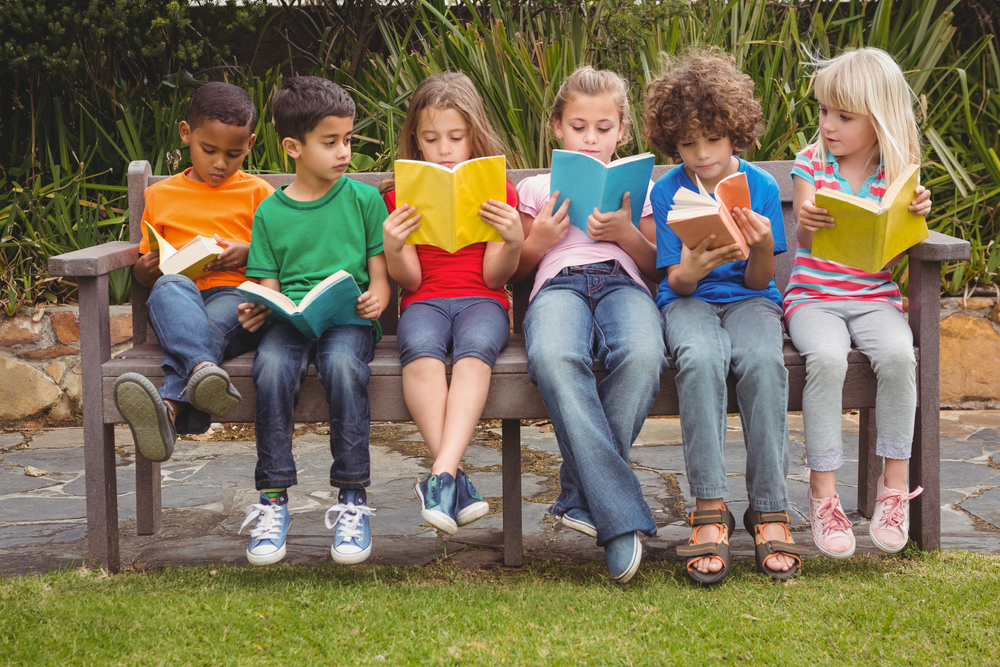Understanding biodiversity Math Worksheets for Ages 3-7
3 filtered results
-
From - To
Explore our engaging "Understanding Biodiversity Math Worksheets" designed specifically for children aged 3-7! These worksheets combine essential math skills with the exciting theme of biodiversity, helping young learners grasp concepts like counting, patterns, and simple addition while discovering the wonderful world of plants and animals. Our fun, colorful activities promote early math literacy and a love for nature, ensuring a well-rounded educational experience. Perfect for home or classroom use, these worksheets encourage children to appreciate the importance of diverse ecosystems while building foundational math skills. Ignite a passion for learning and nature in your little ones today!


Subtracting Numbers: Biodiversity Worksheet


Comparing Biodiversity: Rainforest Plants Worksheet


Comparing Biodiversity: Rainforest Animals Worksheet
Understanding biodiversity through math is essential for parents and teachers of young children aged 3-7. Firstly, it fosters an early appreciation for nature and the variety of life forms, which is crucial in an era where environmental awareness is paramount. By using basic math concepts—like counting different species, measuring plant growth, or comparing habitats—children can develop both numeracy skills and a deeper understanding of ecological relationships.
Moreover, incorporating biodiversity themes into math activities can make learning more engaging and relevant. For instance, activities can involve counting animals in local parks or sorting leaves by size and shape, thereby integrating outdoor exploration with academic development. This approach enhances critical thinking skills as children explore patterns, categorize organisms, and solve problems related to their environment.
Furthermore, understanding biodiversity fosters a sense of responsibility towards the planet. Children learn that their actions can impact ecosystems, nurturing their role as stewards of nature. Ultimately, blending math with biodiversity not only supports children’s cognitive growth but also helps instill values of curiosity, respect, and care for the world, laying a foundation for informed and responsible individuals of the future. Encouraging this integrated learning environment is crucial in shaping well-rounded, environmentally-conscious young minds.
 Assign to My Students
Assign to My Students




















